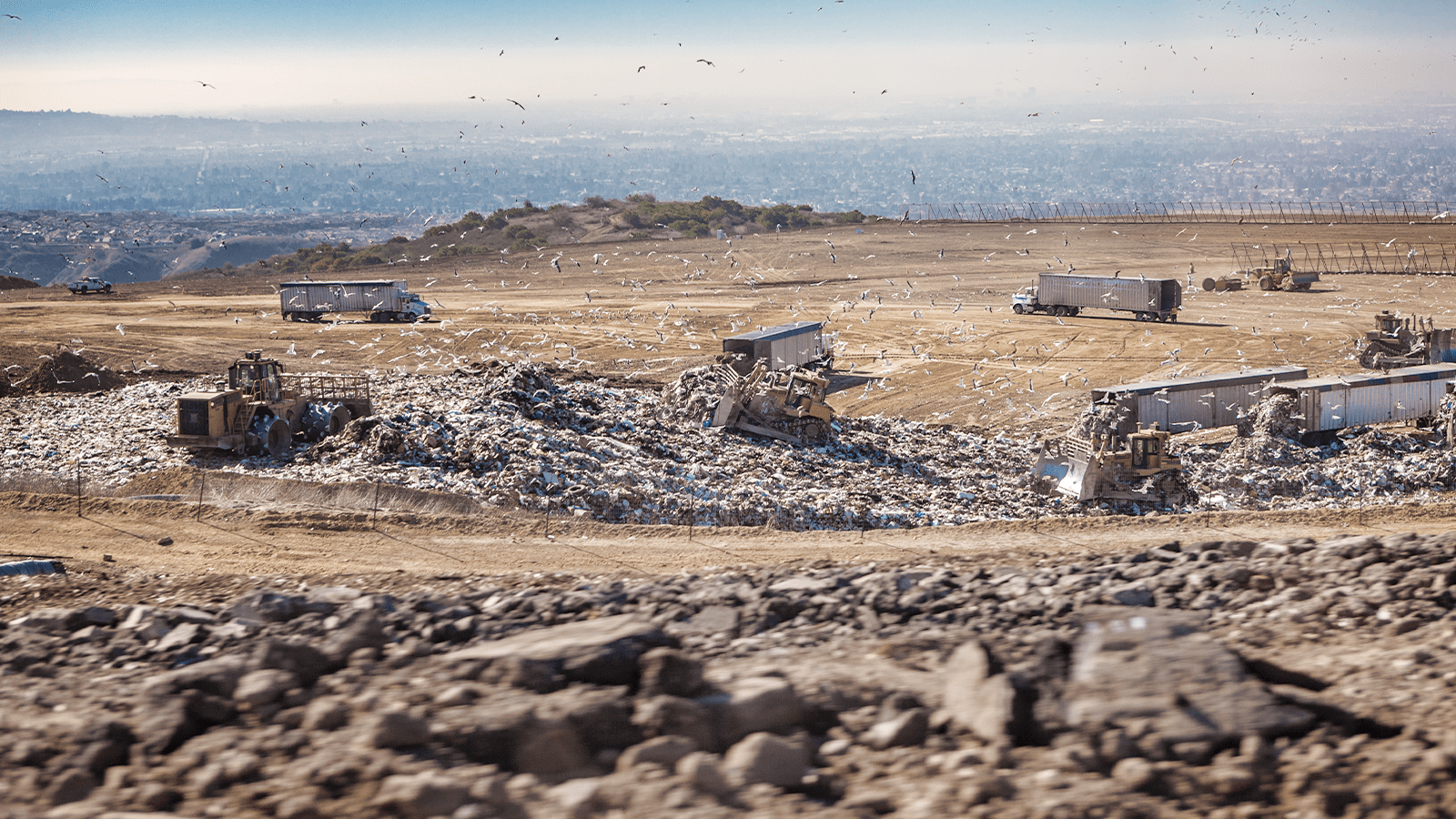Any climate action plan that wants to quickly turn the tide of global warming has to tackle methane, which traps orders of magnitude more heat in the atmosphere than carbon dioxide in the first years after it’s emitted. For this reason, the Environmental Protection Agency recently required oil and gas drillers to monitor for leaks of the potent greenhouse gas — and fix them immediately if they’re found. The new regulations also empower community groups and environmental advocates to report fossil fuel companies if they can provide evidence of leaks themselves.
However, none of these requirements apply to one of the largest sources of human-caused methane emissions in the U.S.: landfills. As food waste and other organic matter decompose, they generate methane and other noxious gases. As a result, landfills are responsible for nearly a fifth of the country’s methane emissions, but almost half of U.S. landfills have not installed gas-capture systems, nor are they required to. In fact, emissions from many smaller landfills are not regulated by the EPA at all. For those that are subject to regulation — because of their size and estimated toxic emissions — landfill operators are required to walk around their facility’s perimeter and take methane measurements every 100 feet four times a year.
There are more than 2,600 landfills across the country, and they leak the equivalent of 287 million metric tons of carbon dioxide per year into the air — a volume comparable to that which would result from operating 74 coal plants. A recent study by Carbon Mapper, a nonprofit that operates methane-detecting satellites, found methane emissions from landfills are 40 percent higher than previously estimated by the EPA.
“Landfills were actually found to be worse than oil and gas in the sense that when methane plumes happen, they’re more persistent,” said Katherine Blauvelt, a campaign director at Industrious Labs, an environmental organization working to decarbonize heavy industries. “If there was a canary in the coal mine, it’d be dead.”
Despite this, new federal regulations do not yet appear to be on the horizon. The EPA last revised regulations to reduce methane emissions from landfills in 2016. And while the agency is nearing an August 2024 statutory deadline to begin reviewing existing standards, it hasn’t initiated a new rulemaking process yet. (EPA representatives did not immediately respond to Grist’s request for comment on Monday.)
Last year, Industrious Labs obtained EPA inspection reports for four landfills in Oregon and Washington. The group found that inspectors reported dozens of instances when methane levels exceeded the EPA’s limit of 500 parts per million. In a follow-up report published last week, Industrious Labs broadened its analysis and examined inspection reports for landfills in an additional six states. The findings were alarming. The group found that nearly half of the inspections showed methane levels above the EPA’s threshold — even though, in many cases, landfill operators themselves had recently assured the agency of their compliance.
“That’s where you immediately say to yourself, ‘Something is wrong with the system,’” said Blauvelt. “The landfill operators are being set up to fail if they’re missing these large methane leaks.”
Blauvelt added that operators should opt for aerial monitoring technology such as drones and satellites, which can provide more accurate coverage, rather than the quarterly ground-level measurements that are the current standard.
Meanwhile, residents who live near landfills are battling nasty odors and explosions. In Southern California, an underground fire at Chiquita Canyon landfill has produced noxious fumes and contaminated runoff for the last two years. In Berkeley, explosive levels of methane were detected at a shuttered landfill beneath a park.
Joel Geier became very familiar with the nauseating odors associated with these sites in 2005, when he moved into his house less than half a mile from Coffin Butte Landfill near Corvallis, Oregon. Most days the wind blows away from his home, but on the days that the wind blows south, he’s hit with a “toxic chemical smell,” he told Grist, along with a “sour decomposition-type smell.”
Geier is a hydrogeologist, and he has been closely tracking the flow of runoff from the landfill. In recent years, high levels of arsenic have been found in monitoring wells around Coffin Butte. When it rains, water seeps through the landfill, reacting with the various chemicals it encounters on the way. The resulting brew is called leachate, and it can end up in groundwater and contaminate water wells that residents like Geier rely on. (Representatives from Coffin Butte Landfill did not immediately respond to Grist’s request for comment on Monday.)
Leachate also interferes with methane collection systems. Buried inside landfills are perforated pipes that trap and treat gases before they can escape and pollute the atmosphere. Coffin Butte collects about 30 million gallons of leachate a year. When EPA inspectors visited the dump in recent years, they observed that methane levels exceeded the agency’s 500-parts-per-million regulatory threshold at the leachate cleanout locations. Gas buildup was sometimes so high that inspectors noted that some tarped areas of the landfill were visibly inflated.
Blauvelt is hopeful that, when the EPA issues new landfill rules, it will borrow from its strategy for the oil and gas industry. By tackling methane, the Biden administration can reduce planet-warming emissions and improve living conditions for communities across the country, she said: “It’s an issue that has a lot of wins attached to it, if they choose to act.”
This story was originally published by Grist with the headline Landfills leak methane with impunity, new research shows on May 21, 2024.
“Something is wrong with the system.” Regulation Grist






